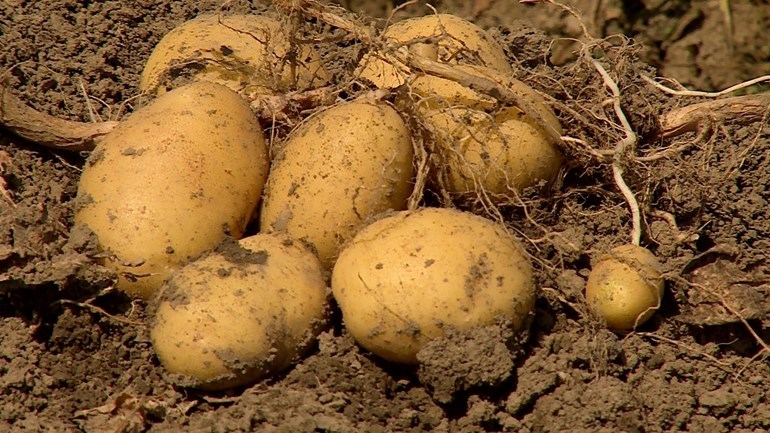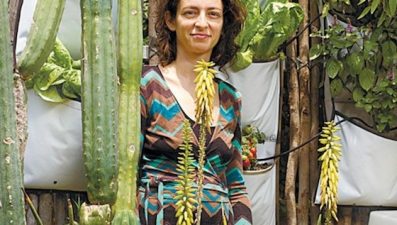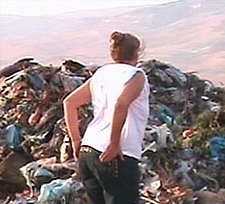
I love potatoes (especially in Moroccan cooking like mafroum) and coming from an immigrant family from Holland and Scotland, eating potatoes was basically a part of every meal, like bread and butter.
But my mother was always afraid of potato “eyes” and the green bits and she and my dad would prune the unwanted bits away. In a time when we want to eat and forage all food scraps, the green parts of the potatoes are definitely something we need to leave for the compost bin. And maybe not even feed the animals.
It turns out green potatoes are so toxic they can kill.
In 1924, Science magazine reported on a fatal case of potato poisoning: James B. Matheney of Vandalia, Illinois, had gathered about one and a half bushels of tubers, which had turned green due to sunlight exposure.
Two days after eating the potatoes, most of his family – wife, two daughters and four sons – showed symptoms of poisoning; the only exceptions were James himself, who didn’t eat the potatoes, and a breast-fed baby boy. His wife, aged 45, died a week later, followed by their 16-year-old daughter. The other five members of the family recovered.
Although such fatalities are rare among human beings, farm animals often get sick or die after eating green potatoes. Symptoms include damage to the digestive system as well as loss of sensation, hallucinations and other neurological disturbances. Death can be caused by a disruption of the heartbeat.

The culprits are the toxic substances solanine and chaconine; their concentration rises sharply with exposure to light or during sprouting, and they protect the tubers from insects and disease.
Solanine and chaconine belong to the large family of glycoalkaloids, which includes thousands of toxins found in small amounts in other edible plants, including tomatoes and eggplant. These substances have been known for over 200 years, but only recently has Prof. Asaph Aharoni of the Plant Sciences Department at the Weizmann Institute in Israel begun to unravel how they are produced in plants.
He and his team have mapped out the biochemical pathway responsible for manufacturing glycoalkaloids from cholesterol. Their findings will facilitate the breeding of toxin-free crops and the development of new crop varieties from wild strains that contain such large amounts of glycoalkaloids that are currently considered inedible.
Several years ago, in research reported in The Plant Cell, the scientists identified the first gene in the chain of reactions that leads to the production of glycoalkaloids.
In a more recent study published recently in Science, they managed to identify nine other genes in the chain by using the original gene as a marker and comparing gene expression patterns in different parts of tomatoes and potatoes.
Disrupting the activity of one of these genes, they found, prevented the accumulation of glycoalkaloids in potato tubers and tomatoes. The team then revealed the function of each of the genes and outlined the entire pathway, consisting of ten stages, in which cholesterol molecules turn into glycoalkaloids.
Could this mean a future of potatoes that never turn green and which can be stored longer to feed more people efficiently? A story we wrote in 2018 points to this direction. But we aren’t really sure genetic alteration is the key. Genetic selection is okay.
An analysis of the findings produced an intriguing insight: Most of the genes involved are grouped on chromosome 7 of the potato and tomato genome. Such grouping apparently prevents the plants from passing on to their offspring an incomplete glycoalkaloid pathway, which can result in the manufacture of chemicals harmful to the plants.
Now pass the ketchup. Naturally fermented of course.



